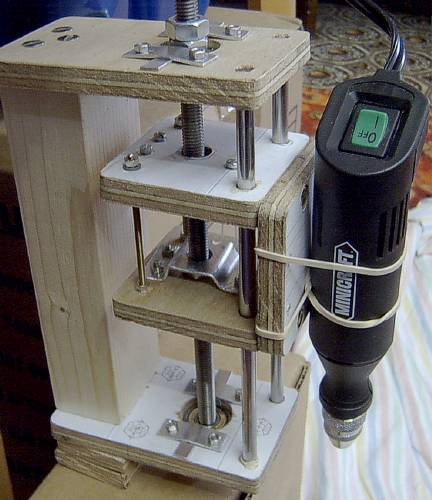I now had a bit of a problem. I had blown my budget on the DryLin linear guides on the Y axis. Those same guides would make a very good Z axis but I couldn't really afford them. However, from the same old DEC floppy drive that I mentioned earlier, I had also salvaged some stainless steel rods. They would make good sliding guides. I couldn't afford any linear bearings either but I had noticed that when I filed the marine ply, it became very smooth but still very hard. Perhaps I could do without proper linear bearings? So I came up with a design with two fixed end brackets containing bearings and two sliding plates joined together by a front plate. The miniature drill would be bolted to the front plate using aluminium straps.
Here are the designs:


As before, I could bolt the marine ply together to make two brackets for the price of one. However, since the stainless steel rods had to pass through all four pieces of wood, both pairs of brackets had to be bolted together as well in order to get the alignment right.
Here are the brackets:








